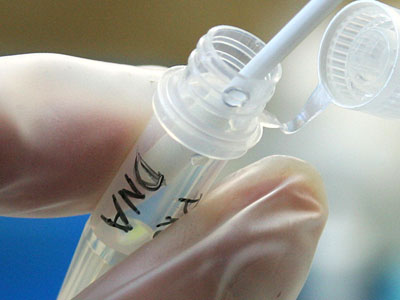New ultrasensitive electronic sensor offers cost-effective and quicker DNA testing
 Scientists at Singapore's Institute of Bioengineering and Nanotechnology (IBN) claim that they have developed a device called the Nanogap Sensor Array, which is not only cost-effective but also more efficient and less time consuming in testing DNA for disease diagnosis.
Scientists at Singapore's Institute of Bioengineering and Nanotechnology (IBN) claim that they have developed a device called the Nanogap Sensor Array, which is not only cost-effective but also more efficient and less time consuming in testing DNA for disease diagnosis.
Singapore scientists claim that the new electronic sensor array can aid biological research by reducing the time in DNA testing. Earlier the human DNA was tested by using polymerase chain reaction (PCR) which was not only costly but also time consuming.
In the new biosensor, the presence of DNA strands and traces is translated into electrical signals. This is done by compressing the genetic material between two different surfaces, and then assessing the differences between them, in terms of electricity. This way DNA is detected more efficiently.
Group leader Zhiqiang Gao, PhD, explains that the novel vertical nanostructure design and two different surfaces of the sensor allow ultrasensitive detection of DNA. This sensitivity is best-in-class among electrical DNA biosensors. The design of the sensor also took into consideration the feasibility of mass production in a cost-effective way for expanded usage.